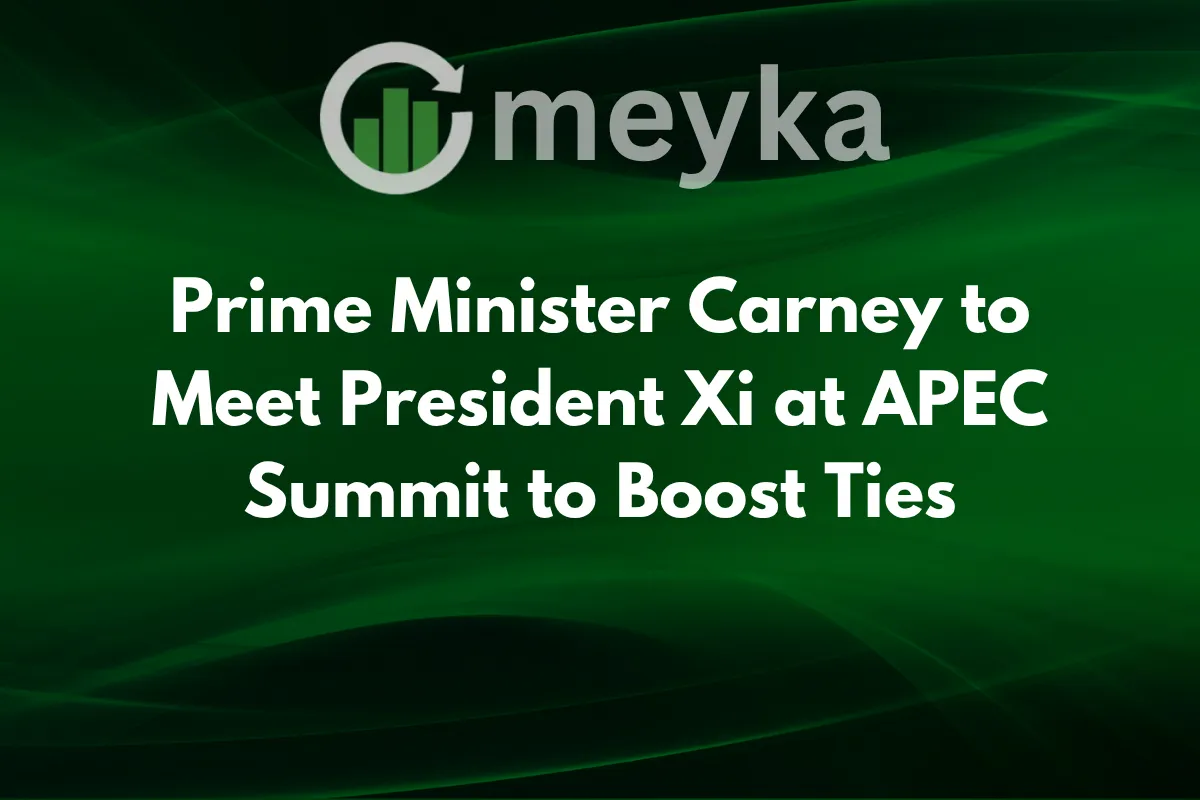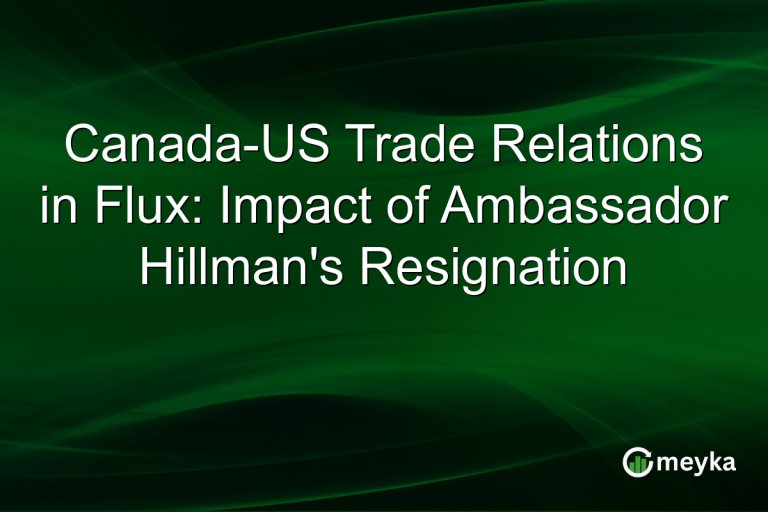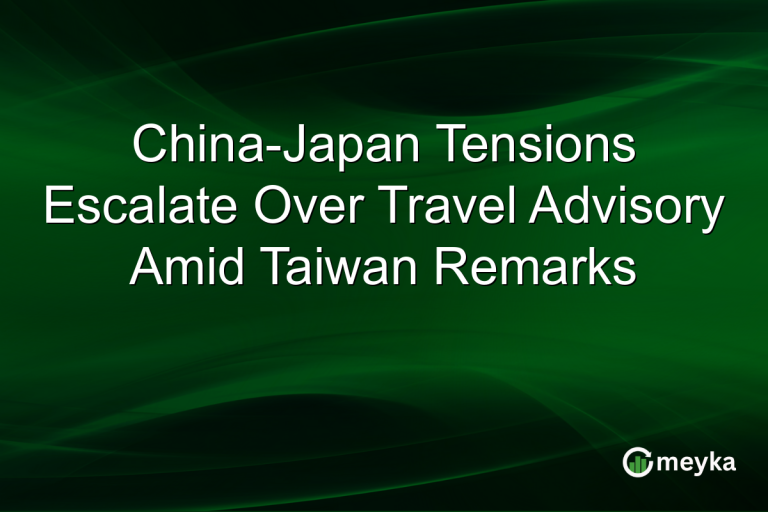Prime Minister Carney to Meet President Xi at APEC Summit to Boost Ties
We are watching a significant shift in global trade diplomacy as Canada’s newly appointed Prime Minister Carney prepares to meet Chinese President Xi Jinping during the APEC 2025 Korea summit, scheduled for 31 October-1 November 2025 in Gyeongju, South Korea. According to recent press comments, Carney expects a meeting with Xi on the sidelines of the forum. This pivot comes at a time when Canada’s trade discussions with the United States are in flux, and the Canadian government signals a strategy to diversify trade beyond its traditional U.S.-centric orientation. For investors and analysts, the developments around Prime Minister Carney’s outreach to Beijing matter because economic, regulatory, and trade-policy outcomes could influence sectors ranging from natural resources to manufacturing and clean technology. Looking ahead, this meeting could mark a new chapter in Canada, China economic ties.
Section 1: Strategic Context for Prime Minister Carney’s Agenda
Why the Canada, China agenda matters
Prime Minister Carney enters office with a declared ambition to reduce Canada’s dependence on the U.S. market and to double exports to non-U.S. partners over the next decade. This shows a strategic recalibration of Canadian foreign economic policy. As trade between Canada and the U.S. experiences strain, from new tariffs announced by the U.S., Canada is seeking alternatives.
The significance of the APEC platform
The APEC summit in Gyeongju will convene leaders from 21 Asia-Pacific economies. It gives Prime Minister Carney a high-profile setting to engage not only China, but also ASEAN economies and other key trade partners. For industry, that means access to diplomatic momentum that may translate into trade agreements, export memorandums, or regulatory cooperation.
Takeaway: The strategic setting underlines that Prime Minister Carney’s meeting with President Xi is not ceremonial, it is embedded in Canada’s broader trade diversification strategy.
Section 2: Trade, Tariffs and Legal Implications
U.S. tensions and Canadian exposure
Canada is contending with new U.S. tariffs following the termination of trade talks by U.S. President Trump. Canada faces an additional 10 % tariff on Canadian goods as of late October 2025. This elevated risk of U.S. escalation places urgency on Canada’s legal and regulatory readiness, including trade remedy laws and WTO obligations.
China route and regulatory considerations
On the China side, Ottawa will likely press for tariff relief, for example, China currently maintains a 75.8 % tariff on Canadian canola, which is a C$5 billion industry. The legal context includes not just bilateral trade law but also how Canada positions itself under WTO rules and any future Canada-China trade agreement framework. Industries such as agriculture, clean tech and EVs (electric vehicles) are watching closely because regulatory changes (tariff removal, market access) could shift competitive dynamics.
Takeaway: For investors and companies, monitoring legal frameworks (tariffs, trade agreements, regulatory cooperation) under Prime Minister Carney’s diplomacy is essential, especially if Canada secures meaningful changes in Canadian–China trade law.
Section 3: Industry Impacts & Sector-Specific Effects
Clean technology and EV market opportunities
Prime Minister Carney’s engagement with China comes amid rumoured discussions that Canada may remove tariffs on Chinese electric vehicles. For Canadian manufacturers and importers, this signals potential market shifts: tariff relief could encourage Chinese EV makers to expand in Canada, or second-tier suppliers to establish operations in Canada. That has implications for supply-chain law (such as local content rules, investment review).
Natural resources, agriculture and manufacturing flank
Canada’s pivot to Asia affects resource and agriculture sectors deeply. For example, Canada seeks to broaden export markets for canola, nickel, lithium and other critical minerals used in batteries. The canola industry alone faces steep Chinese tariffs currently. For manufacturers, the realignment of automotive supply chains, away from a U.S.-centric model could open new partnerships but may require legal compliance with foreign investment legislation and export controls.
Takeaway: Industry participants should track how Prime Minister Carney’s dialogues translate into concrete market access or regulatory reforms, especially in clean tech, resources and manufacturing supply-chain sectors.
Section 4: Legal & Governance Considerations
Trade agreement law and enforcement
When Prime Minister Carney meets President Xi, any understanding reached must still be codified, ratified and implemented via legal instruments. This includes possible memorandum of understanding (MOU), tariff schedules, and regulatory alignment documents. For investors, the enforceability of these instruments matters. Canada must ensure obligations comply with its WTO commitments and domestic administrative law.
Governance, human rights and geopolitical risks
While much of the focus is economic, governance issues cannot be ignored. Prime Minister Carney’s team may face questions about human rights, foreign interference, and security concerns in Canada–China relations. Although Carney declined to confirm whether those topics would be raised, he indicated discussion would be “guided by principle”. For the legal governance environment, this means companies may face reputational or regulatory risks if engagements appear inconsistent with Canada’s broader values.
Takeaway: From a law and governance standpoint, investors and firms need to keep an eye on not just the trade outcomes but also the compliance, transparency and governance safeguards that accompany new Canada-China initiatives under Prime Minister Carney.
Investor Reaction / Market Sentiment
Social signals are emerging. On Reddit, users in r/canada commented on Prime Minister Carney’s plan to meet President Xi:
This shows some public optimism around the Canada pivot to China. From a market sentiment perspective, sectors linked to Chinese imports, like EVs or manufacturing components, are seeing tentative upbeat signals. For investors, the key is watching announcements during the APEC summit and then gauging how equities in Canadian resource, agriculture, and clean-tech firms respond to any concrete deal. The mood is cautiously positive but still contingent on deliverables.
Conclusion
In sum, Prime Minister Carney’s upcoming engagement with President Xi at APEC 2025 marks a strategic and legal inflection point in Canadian trade diplomacy. For non-U.S. export growth, Canada is deploying diplomatic effort to diversify and deepen ties with Asia. That sends a strong signal to industry that trade and regulatory frameworks may evolve, even as U.S. trade tensions intensify. For firms and investors in agriculture, clean technology, natural resources and manufacturing, the clear actionable takeaway is to monitor the upcoming bilateral outcomes, analyze how they affect tariff structures and regulatory regimes, and prepare for potential shifts in supply chains and market access. From the legal perspective, the enforceability of trade commitments, governance conditions and compliance frameworks will matter just as much as headline deals. Looking ahead, Canadian companies and global investors should integrate the evolving Canada-China axis into their risk and opportunity assessments, and be ready to act if Prime Minister Carney’s diplomacy delivers on tariff relief or expanded market access.
FAQS
Prime Minister Carney expects to meet Chinese President Xi Jinping during the APEC 2025 summit in Gyeongju, South Korea, scheduled for 31 October-1 November 2025. The meeting is not yet formally scheduled as a fully bilateral summit but is anticipated to occur in a “corridor-style” discussion on the sidelines of the event.
The meeting seeks to support Canada’s aim to diversify exports beyond the United States, target doubling non-U.S. exports over the next decade, and explore tariff relief and market access with China. This also aligns with sectors like canola, critical minerals and EV supply chains, which are sensitive to tariffs and trade rules.
Canada is facing additional U.S. tariffs, 10 % on Canadian goods, after U.S. President Trump terminated trade talks. Prime Minister Carney has signalled openness to talks with the U.S. while actively engaging China as a diversification strategy. The U.S. tensions heighten the importance of Canada-China engagement.
Agriculture (especially canola, which faces a 75.8 % Chinese tariff), clean-technology and EV sectors (tariff relief on Chinese EV imports is under discussion), mineral extraction/supply chains (nickel, lithium) and manufacturing supply chains that might shift away from heavy U.S. orientation. Firms in these sectors should monitor regulatory/trade developments closely.
Disclaimer:
The content shared by Meyka AI PTY LTD is solely for research and informational purposes. Meyka is not a financial advisory service, and the information provided should not be considered investment or trading advice.






